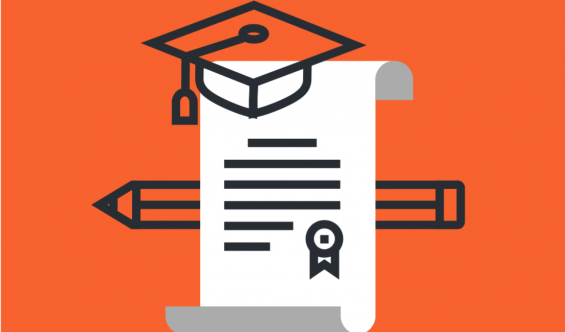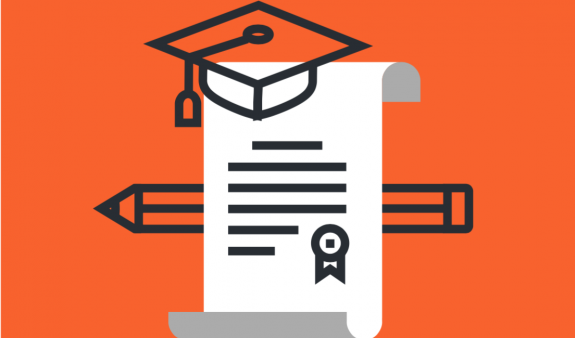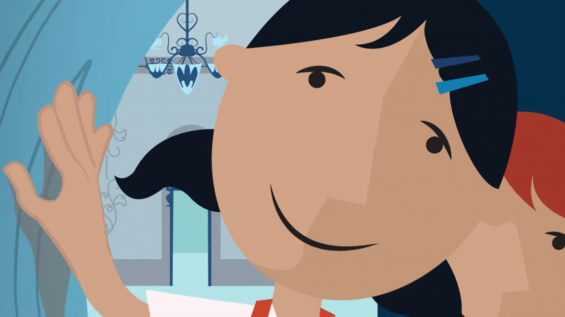
I made my classroom look like the real world…and test scores soared
Anthony Johnson is an elementary school teacher in North Carolina and a TED-Ed Innovative Educator. Below, he describes his innovative classroom structure: “Johnsonville.”
Think about the jobs in today’s economy — the ones we’re supposed to prepare students for after graduation. Are employees evaluated using bubble-in tests to prove they know the ins and outs of their job? Do they learn and use new skills one at a time in a vacuum? The questions sound a bit silly until you realize too often that’s what students take away from their education. Why is the culture to drill facts into students’ heads just to pass a test?
Just like in the real world, my students show what they can do through projects, teamwork, and research. Is it working? Well, according to state science exams, my students consistently score higher than other science classes in my district.
I’ve never been a big believer in teaching to a test. Indeed, since my first year in the classroom I’ve used a project-based model with my science and social studies classes. On the first day of school I issue my fifth-graders a PASSPORT (which stands for Preparing All Students for Success by Participating in an Ongoing Real-world simulation using Technology) and explain that their yearlong adventure to “Johnsonville” starts today. The school year is a simulation of adulthood where students work, create, and learn about personal finance and entrepreneurial skills. They experience real-world situations and gain insights into global affairs. Students tend to view my classroom less as a “classroom” and more of an interactive city where all projects intertwine to create an ecosystem of businesses and homes.
Each student has the opportunity to become an entrepreneur, politician, banker, and more. They are given $1,000 in Johnsonville cash to begin their lives. Students must buy a house or rent an apartment, earn wages, and manage their finances. As the children buy and sell items I donate, they learn math skills along with life lessons.
As they would in a real business, they manage a database of their clients or suppliers, create advertising plans, and track their income to ensure they are making a profit. Students even learn different levels of government and hold elections for positions of power, including president and city council. Students can also earn extra money through academic achievements and good behavior.
Here are a few reasons I believe this model works so well with students.
Project-based learning is relevant to students. In Johnsonville, students explore issues like buying a home, paying rent, starting a business, and managing finances. Students see adults face these same issues and can relate what happens in Johnsonville to the real world. Relevancy makes each lesson memorable, meaning students are more likely to remember the overall concept of a lesson as opposed to memorizing facts for a test.
It encourages collaboration. Desks are designed for individual students—which is why I don’t have any. In my classroom you will only find tables, collaboration bars, and sofas that are perfect places for students to think creatively and problem-solve. It is important that students take an active part in their own learning and are able to solve problems using what they know and have learned. By using critical thinking skills to collaborate and complete performance-based lessons, my students are fully engaged throughout the entire school year.
Students are in control. Other teachers trying PBL often tell me, “my kids can’t do it” or “it’s a lot of work.” I think the real issue here is teachers not wanting to give up control of their classrooms. PBL gives me the freedom to facilitate and encourage critical thinking. Additionally, I find students work better when the teacher isn’t hovering over them. PBL promotes students to think creatively and build the 21st-century skills they need to be successful in today’s job market.
Students are using pre-built, credible, standards-aligned curriculum. I have discovered Defined STEM is a great tool to help me create relevant lessons I can incorporate into Johnsonville. The supplementary curriculum provides students with research resources, videos, and project prompts that encourage students to think outside the box and put them in real-world situations.
On test scores
The state of North Carolina does not test students on collaboration and citizenship, but does consider critical thinking a key ability. I’ve discovered the best way to test student’s critical thinking skills is through project-based learning. In addition to working in the realm of Johnsonville, students complete at least one project a month to show what they’ve learned in a real-world situation.
North Carolina State testing shows that my PBL model improves student scores. At the end of the 2016 school year, my fifth-grade students scored an average of 85 percent on the state science exam, while my school as a whole scored 58 percent. It’s not a leap to suggest the focus on PBL and hands-on learning was the catalyst for this major boost.
It’s important to remember that every child is different and learns differently. Relating classroom lessons to real life helps students at any level connect with the content and interpret it in a way they are able to understand. When students become part of their own learning, they take pride in their education and become more engaged. PBL not only keeps students busy, but it allows each one to show what they’ve learned in a creative, supportive, and collaborative environment.
Author bio: Anthony Johnson is a fifth-grade science and social studies teacher at Isenberg Elementary School in Salisbury, North Carolina. He is also an Apple Distinguished Educator and TED-Ed Innovative Educator, and was recently selected as Teacher of the Year for the Rowan-Salisbury School System. This article appeared first in eSchool News.
Image credit: Shutterstock
To learn something new every week, sign up for the TED-Ed Newsletter here >>




This is my first time to read about Ted-Ed. I seem to be interested to know more.
Thanks.
Congrats…. here my project for esl students tinyurl.com/flanderslane1516
Love this kind of teaching, but what does PBL stand for?
PBL=Project Based Learning
I tried a project learning based program with my oldest son who has autism. He is high functioning with standardized test scores at the 93rd percentile and higher in three areas. He couldn’t learn in this environment. Do you have any techniques you use to work with your special needs students so they learn to their potential?
Relevant and interesting. Like to learn more.
This deserves a Ted Talk!
Thank you for the inspiration, project-based learning speaks to my heart ❤️ excited to follow this research.
Providing some resources might help others get experimenting! Do you have a teacherspayteachers.com page? I’ve been moving towards this structure in my classroom this year.
I was wondering how does the Project Based Learning look in your school district at the middle school level, particularly 8th grade Math when we are restricted to Units and standards and benchmarks to be tested? Thank you for your feedback.
I would like to get in touch with Anthony Johnson to introduce this concept In our school
anthonyjohnson@me.com
I would love to speak with you.
This is excellent. Thats why I use puppetry to teach indigenous knowledge science in gr R
Brilliant, more educators need to apply the real world to their classrooms. Bravo
This looks absolutely amazing. I would love to begin project based learning in whatever school I end up in (currently a student teacher). How did you get this started? I don’t personally know any teachers who do this form of teaching and am very interested in learning how to start this method of teaching. This type of instruction and learning environment is not taught in college either. If you have any resources you could share I would appreciate it! Thanks!
Hi Shannon! We love how interested you are in PBL as a student teacher. Anthony Johnson uses our program, Defined STEM in his extraordinary classroom! We are an online resource with hundreds of authentic PreK-12 Project Based Lessons including rubrics, videos, career videos and more.
Take a free trial with us at definedstem.com
Access Code: FREEPBL valid until 7/20
Feel free to email any questions to nora_quinn@definedlearning.com
Great post, these definitely do sound like worthwhile projects that would engage students more than rote memorization.
I’m curious, to put your state science exam score into context, how did your previous classes fare before you adopted the PBL model?
Anthony, are there certain books you would recommend to help me get started in PBL? Thanks!
Anthony, just place yourself on my list of heroes. I don’t even know what to ask you.
I want to have a community classroom of learners like you describe. How do I start?
Thank you for your time.
Kim Kicklighter
As a Human only has one life and one opportunity to grow up and living the best possible life they can. The question really has to be asked as why the population votes for what other people consider important and yet no one seems really interested in voting (fighting) for the right of their child to grow up and learn in the BEST POSSIBLE WAY!!
Dear Anthony Johnson, this is where ‘Your teaching model’ comes into play. Hope it starts to infiltrate the main stream system…..after all, one only has to think of the modern system and how many drop outs it produces per year!! Yet when those people grow up and complain. They’re told “well look, your an Adult now, you can make what ever you want of your life’. I agree of course. Although, when hearing such comments one really does wonder what the point of the schooling system is? As in from the perspective of having the best possible outcome. Though I am of course talking about the best possible outcome of each and every new Individual rather than someone elses ‘Global Agenda’ in bringing up people to become modern day slaves! Like whats happening in the world today!!
Footnote:
Dear Parents, I’m not ”literally’ saying, that ‘You’ don’t care about the Education System’ of course you DO!! What I’m relating to is like a CREATION OF A ‘Movement’ to push out the old system and bringing in the new. Also, with the new rather improved model. Why would People have to go through different schooling systems?? Why not have the different stages of schooling within the same premise? Of course, this model could also be used remotely by people who may not be able to get to school,Plus of course ‘TEST SCORES WOULD BE PUSHED OUT TOO’ As I bet that is used on purpose so that when someone gets a low score, it also pushes down ones self esteem, creating unnecessary stress though of course depending upon the Individuals pre-disposition.
The question really has to be asked is why a system like that would be brought in? Course I do have a pretty good idea as to why. Like I am sure many of you also do….yes?
Great work Anthony!! We need more teachers like you who make the children think and analyze. Learning to a test is not what the kids need.
How can I implement this in an ELA class? I’ve taught PBL, but not on this level. I’m not scientific nor mathematic, so I need to figure out how to do it in an ELA environment.